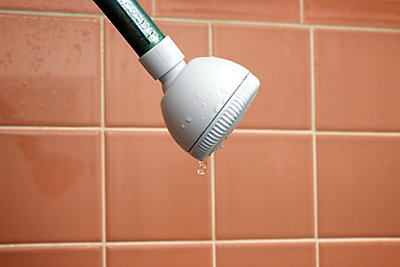Can a Leaky Showerhead Be Fixed Easily?

There’s nothing worse than a leaky showerhead! Well, we can think of a few worse things, like the higher bills it causes. Here’s how to fix the problem:
What causes a leaky showerhead?
First, though, you probably want to know what caused your showerhead to start dripping long after your shower is over, in the first place, so you don’t run into this issue again. Usually, leaks are caused by damaged valves (the valve is behind the faucet). It could also be that the small rubber rings that create a seal between moving metal parts are worn, and now water is seeping out of the connection. But, how do you know if the problem is the O-ring or the valve behind the faucet? The only way to figure this out is with a bit of DIY!
How to repair it yourself
The first step is turning off your water supply at the main shutoff valve. If you don’t do this, water could end up shooting out at you, and we don’t want that to happen! Remove the showerhead by unscrewing it with an adjustable wrench, or even by hand if it can be removed from the hose by hand. Take the showerhead apart and inspect all pieces for any corrosion or gunk buildup, which can cause leaks. Also, of course, inspect these parts for wearing or cracks. If everything looks in good condition, then soak all parts in vinegar overnight to dissolve buildup. Rinse them well and dry them completely. You can also use a toothbrush to scrub away grime and lime that doesn’t want to come off. This is also called “descaling” your showerhead in addition to cleaning it because you’re getting rid of the lime buildup.
What to do if this doesn’t work
If you’ve taken the showerhead apart (being careful not to lose the washer or O-ring in the process) and reassembled and reattached all parts … and now the showerhead is still leaking … you know the problem is not the O-ring or washers. The showerhead is sealed tightly, so the leaking must be caused by the valve behind the faucet instead. So, here’s what to do in that case!
First, determine whether you have one or two faucets (which should be a pretty easy determination to make). If you have two (one for cold water and one for hot water), then you’ll need to figure out which is the problem. Do this by feeling the temperature of the water dripping from the showerhead, and then you’ll know if the leak is coming from the valve of the cold tap or the hot tap.
Now that you know that info, make sure you’ve turned the water supply off again. While removing a shower valve yourself is possible, it’s much simpler (and cheaper) to have the plumber do it if you’re not 100% sure of the process yourself. After all, if you accidentally make a mistake like removing the rubber gasket along with the valve collar or damaging the brass bushing while trying to remove it, it’s challenging to get things back to the way they’re supposed to be.
Related Reading
Subscribe to our e-Newsletter
Stay up-to-date on current news, promotions, and industry tips.
